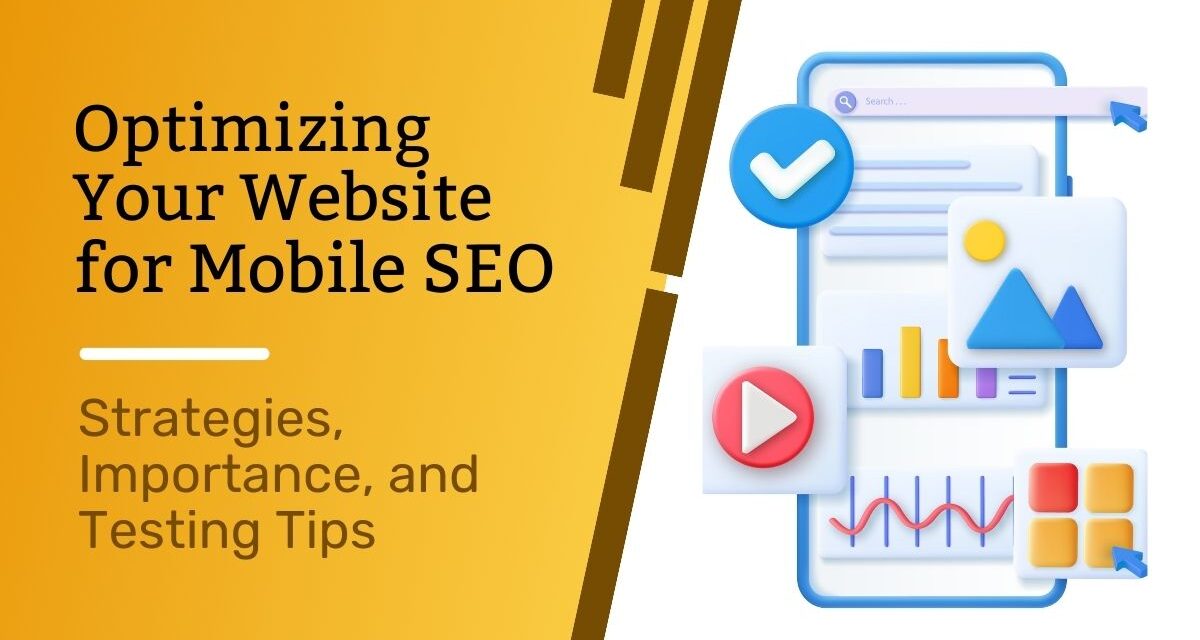What is Mobile SEO?
Mobile SEO is the process of making your website look good and work well on mobile devices.
This is important because more and more people are using mobile devices to search the web. If your website is not mobile-friendly, you are missing out on potential customers.
There are a few things you can do to improve your website’s mobile SEO:
- Make sure your website is responsive, meaning it automatically adjusts its layout to fit the size of the screen.
- Use high-quality images that load quickly.
- Write clear and concise content that is easy to read on a small screen.
- Use relevant keywords throughout your website.
Mobile SEO is important because most people use mobile devices to search the web.
If your website is not mobile-friendly, you are missing out on a lot of potential customers.
Here are some reasons why mobile SEO is important:
- More people are using mobile devices to search the web.
- Google is giving priority to mobile-friendly websites in search results.
- Mobile users are more likely to convert into customers.
If you want to reach a wider audience and improve your chances of converting mobile users into customers, you need to focus on mobile SEO.
Here are some things you can do to improve your website’s mobile SEO:
- Make sure your website is responsive, meaning it automatically adjusts its layout to fit the size of the screen.
- Use high-quality images that load quickly.
- Write clear and concise content that is easy to read on a small screen.
- Use relevant keywords throughout your website.
- Learn more about SEO goals and objectives.
Google now uses mobile versions of websites to rank them in search results.
If your website is not mobile-friendly, it will not rank as high as it could.
To make your website mobile-friendly, you need to make sure it is responsive, meaning it automatically adjusts its layout to suit the size of the screen.
You should also use high-quality images that load fast, and write clear and concise content that is easy to read on small screens.
By following these tips, you can ensure that your website is optimized for mobile and reaches a wide audience.
If you haven’t configured your site for mobile yet, the next section explains how.
How to configure your website for mobile
When it comes to making your site mobile-friendly, there are three options:
- Responsive Design: Responsive design is the best way to make your website look good and work well on all devices, including mobile phones, tablets, and laptops. It is also the best way to improve your website’s SEO. To make your website responsive, you can use a responsive theme or template, or you can use media queries to control how your content renders on different devices. By following these tips, you can make sure your website is accessible to everyone, no matter what device they are using.
- Separate Mobile Website: A separate mobile website is another option. This means you have two separate websites, one for desktop and one for mobile. This may be a good option if the content or functionality of your desktop and mobile websites is very different.
- Mobile App: Mobile app is the third option. This is a good choice if you want to provide a more immersive and interactive experience to mobile users. However, developing a mobile app can be more expensive and time-consuming than making your existing website mobile-friendly.
Which option is right for you?
The best option for you depends on your specific needs and budget. If you want the easiest and most affordable option, responsive design is the way to go. If you need two separate websites, or if you want to provide a more immersive experience for mobile users, a separate mobile website or mobile app may be a better choice.
Here are some tips for making your website mobile-friendly:
- Use large fonts and clear text that is easy to read on small screens.
- Use high-quality images that load quickly.
- Make sure your navigation is easy to use.
- Test your site on different devices to make sure it looks good and works well.
- By following these tips, you can ensure that your website is mobile-friendly and reaches a wide audience.
How to check if your website is optimized for mobile devices
Google Search Console:
- Sign in to your Google Search Console account. It’s free to use.
- Look for “Mobile Usability” in the menu on the left side.
- Click on it to see if any problems were found with how your site works on mobile phones.
- Google Search Console will tell you things like if the text is too small or if buttons are too hard to tap.
- Use this information to fix any problems so your site works great on phones!

More ways to check your site:
- Google’s Mobile-Friendly Test: Type in your website address and see if it passes the test.
- Test on different devices: Look at your site on your phone, tablet, and different sized screens.
- Ask friends and family: Get their feedback on how easy it is to use your site on their phones.
Remember: Making your site mobile-friendly is important because most people use their phones to browse the web. If your site isn’t easy to use on phones, you could be missing out on visitors and customers!
How to check if your website is mobile-friendly with Google’s Mobile-Friendly Test Tool:
- Go to the Google Mobile-Friendly Test Tool.
- Enter the URL of the page you want to test.
- Click “Test.”
- The tool will tell you if the page is mobile-friendly or not.
- If the page is not mobile-friendly, the tool will provide suggestions for how to make it mobile-friendly.
Here are some of the things the tool will check:
- Text size: The text on the page should be large enough to be read easily on a small screen.
- Clickable elements: Clickable elements, such as buttons and links, should be large enough to be tapped easily.
- Content layout: The content on the page should be laid out in a way that is easy to read and navigate on a small screen.
By following the suggestions from the Google Mobile-Friendly Test Tool, you can make sure your website is mobile-friendly and accessible to everyone, regardless of what device they are using.





